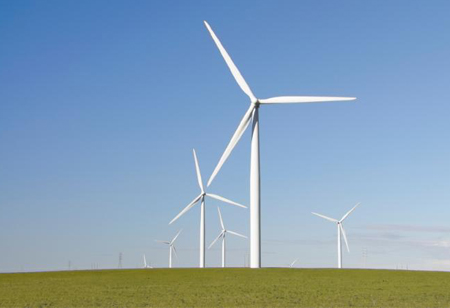
China Blows Powerful Gusts of its Wind Energy Overpowering Competitors


Chinese original equipment manufacturers (OEMs) were protected by the country's sizable domestic market and localized supply chain last year as Western onshore wind markets struggled with a perfect storm of supply-chain issues and expenditure rises. The onshore Chinese sector is now prepared to take advantage of its competitive pricing and economies of scale to grow abroad.
China's size, affordability, and diversification are its main competitive advantages. Due to the healthy home market, a strong local supply chain, and decreased exposure to logistics and commodity risks, its wind companies have experienced stronger profitability than their Western counterparts.
For Chinese onshore foreign expansion, emerging markets and major green hydrogen infrastructure projects are the most plausible opportunities. With the backing of the Chinese government's strength and the doors opened by its emerging-markets climate diplomacy, many nations participating in the Belt and Road Initiative provide an opportune route for Chinese enterprises to enter the market.
For Chinese financing, green hydrogen projects in developing markets in Africa, the Middle East, Latin America, and Asia present a substantial opportunity, particularly in regions where Belt & Road initiatives are already in place. To improve their penetration of renewable energy, many Belt and Road countries must invest significantly in grid infrastructure, which could result in synergistic investment.
Offshore Wind Expansion
Despite the rising cost of raw materials, a significant development of offshore supply chain production has allowed Chinese manufacturers to lower costs in comparison to their international rivals. Many Western businesses have overcome their earlier hesitation to sign up Chinese suppliers thanks to this cost competitiveness. As a result, Chinese producers are increasing and modernizing their manufacturing capacity to meet rising global demand and cutting-edge technology.
Persistent Obstacles
However, it won't be easy for it to expand. Financing, more stringent technical market entrance requirements, protectionist legislation, and rising geopolitical risk are some of the obstacles that may affect the viability of international ventures. Chinese penetration into the US and Western European markets, for example, is expected to be hindered by entrenched rivalry from Western OEMs and investor reluctance.
Numerous obstacles still exist, though. For instance, rising shipping costs and regulatory ambiguity could negate the pricing advantage and put Chinese suppliers' capacity to profit from international projects to the test. Anti-dumping taxes have been levied on wind turbine components from Chinese suppliers by some nations and regions, including the EU.
Strict health and safety regulations, complicated grid connection requirements, and worries about intellectual property infringement may necessitate product redesigns and entail significant additional costs for exporting turbines.
Still Standing Strong
However, for Chinese offshore suppliers, the balance between supply and demand worldwide is still better than ever. According to the supply-demand prognosis for offshore towers and monopiles, Western facilities' delays or cancellations will result in bottlenecks. Given the scenario, it might be challenging for developers and governments to reject Chinese providers.
Additionally, the 2021 installation boom in China led to a short-term offshore surplus, which presents opportunities for Chinese producers to expand internationally. Once a track record has been established, upgraded and expanded facilities will support sustained exports.
The earnings of Chinese suppliers would also be stabilized by exports. The huge costs associated with China's offshore wind subsidy phase-out in 2022 highlight the dangers to Chinese firms of concentrating only on the local market.
Chinese monopile providers have stronger financials than their European counterparts due to their greater level of diversity. This demonstrates that even though they are competing on a battlefield far from their homes, they will be able to absorb increased expenditures and hazards.
Succeed at the Cost of…
Wind energy is not merely a market for expansion for Chinese businesses; it is also a political project. Beijing has been heavily investing in wind energy for years in an effort to control the industry, just like they did with solar panels. The nation's energy industry has undergone significant upheaval as a result of President Xi Jinping's calls for a "energy revolution" and a "battle against pollution". This shift affects not only domestic production but also international trade policy, influence, and investment. Through the use of offshore wind turbines and the expansive landscapes of Tibet, Xinjiang, and Inner Mongolia, China is generating electricity.
China constructed more offshore wind turbines in 2021 than any other nation in the previous five years combined. It exceeded its own record of 52 GW in 2020 by installing 55.8 GW of turbines in 2021, a 19.4% increase. The energy generation capacity of wind turbines in China is currently 344 GW. The US increased its capacity by about 12.5 GW over the same time span, bringing its total to 135 GW.
The first offshore wind farm in Italy's Mediterranean region is among the exports of Chinese turbine manufacturers Xinjiang Goldwind Science & Technology Co. Ltd. and Ming Yang Smart Energy Group Ltd., who have more than doubled their wind export capacity in just three years.
This development has, however, come at a high and frequently unnecessary cost. Given how much of its money was spent on its wind industrial policy, China's significant and comprehensive industrial subsidies should have been used in a way that was independent of technology. The total capacity factor of the Chinese wind market has historically lagged behind other markets, with some research showing real capacity factors as recently as 2019 below 23 percent in contrast to usage levels of over 34 percent in the US market. This low rate is partly due to the severely curtailed growth that occurred in China's windiest provinces in the early 2010s as a result of inadequate transmission capacity. Compared to how much wind capacity it has deployed, China's actual wind generation is significantly less spectacular.
China is now the largest and most significant producer of wind energy in the world because to its industrial wind energy program, but it is still unclear whether the advantages will exceed the high costs.

